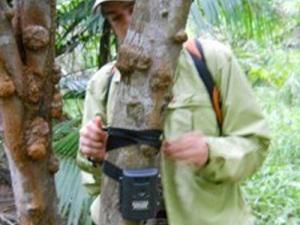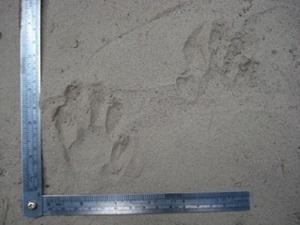Daisy Alejandra Gomez Ruiz
This project will evaluate population trends and activity patterns of some carnivores, and will give some ideas about the viability of private reserve and support its importance in the conservation of fauna and degraded ecosystems.

There is a need of general knowledge about tropical dry forests in Colombia; this ecosystem has been overexploited by livestock and logging activities and actually it represents less than 10% of the original cover. Although there are no important areas protected under governmental figures, particular initiatives are adding to the general objective of conservation of this ecosystem and the fauna associated to it. Mammals, especially carnivores, are considered key species and good indicators of the ecosystem health because of their position as top predators in food chains, helping to maintain the stability of prey populations. Because of their requirement for large areas, protecting these might also protect overlapping areas of many other species.

The Reserva Natural Sanguaré is a private protected area located on Colombia's Caribbean coast It is part of the national system of protected areas SINAP, and is dedicated to sustainable tourism provided by El Golfo Buceo & Verano, research in basic sciences, the recovery of degraded ecosystems, working with local communities to environmental education, sustainable farming and use of non-timber forest resource.
The following activities will be made in order to accomplish the objectives of this project.
- Line transect with scent station methodology (Linhart and Knowlton, 1975); Scent station survey routes are composed of tracking stations (1 m * 1 m) of sifted soil with a attractant placed in the middle; stations are 300-400 m apart from each other. This allow recording of tracks by different species, and can provide a relative abundance index in different periods of the year following the dynamics of species according to seasonal conditions.
- Install camera trap stations along linear transects (Sanderson and Trolle, 2005), to identify number of species and individuals that are visiting the scent stations along each transect, and to collect data to assess the spatial and time activity patterns for the most common species.
- To make a reference collection of tracks in the study area, including photographs and paraffin moulds, to confidently identify and register each species in the study area.
- Using information like signs and tracks, as well as camera trap recording, it can provide a successful methodology to monitor carnivore’s populations; their geographic and temporal presence will indicate the success of conservation efforts that are occurring within the study area.